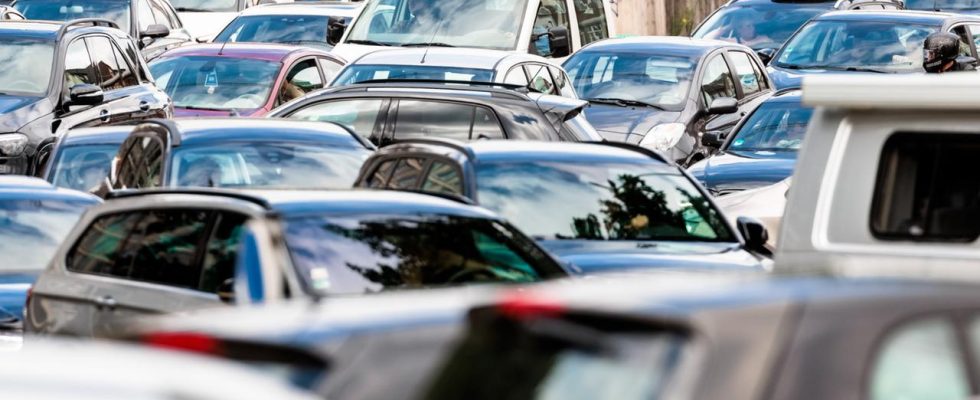The new ADAC monitor shows that dissatisfaction with mobility in cities has grown. It is largest in Stuttgart, Cologne and Duisburg. Even the corona pandemic still plays a role.
To learn how things work properly, you should get on the tram in Dresden. Every day, twelve tram lines with a length of 209 kilometers wind through Dresden’s dense urban street network. “I use the tram for everything here in the city – for work and leisure,” says Sebastian Dieter from Dresden. The 43-year-old waiter takes the train to the center of the city five times a week. “The timing is great and investments have been going into expansion for decades.”
Defended top spot
Dresden is in first place among the major cities examined by the ADAC. Many people in Dresden are particularly satisfied because of the short transfer routes, the high density of stops and the good travel information. According to the ADAC, those who do not use public transport in Dresden but rather drive a car have also given the city good marks: once again in first place, as in the last representative ADAC online survey in 2017.
A good parking guidance system, good signage and good road conditions were crucial for drivers. “If you have to go into the city by car, there are few traffic jams for a big city,” says commuter Sebastian Dieter. According to the ADAC, the accessibility of cities and the quality of urban mobility are important location factors for quality of life, tourism and economic attractiveness.
Cologne and Duisburg are at the bottom
In the city comparison, Dresden is followed by Leipzig, Munich and Nuremberg. Essen, Stuttgart, Cologne and Duisburg are at the bottom of the survey. According to the ADAC, drivers are generally particularly bothered by the parking fees in city centers. The question of how reliably they get to their destination in a planned time was also answered predominantly negatively.
The most important issues for cyclists are the cycle path network and road safety. The judgments here are predominantly critical. In particular, satisfaction with cycling traffic at intersections is low. What is particularly striking is the consistently very negative assessments that drivers, cyclists and pedestrians give e-scooter users. “Even though there are no-go zones for scooters here, they are very disruptive,” says Sebastien Dieter from Dresden. “They drive all over the city on their scooters. That’s dangerous.”
The behavior of cyclists is also rated significantly negatively – by drivers and pedestrians. Overall, drivers, public transport users, cyclists and pedestrians are significantly more dissatisfied with their mobility situation than in 2017.
discontent becomes bigger
This can be explained by two factors, says Meike Jipp from the German Aerospace Center (DLR): The current shortage of skilled workers is hitting public transport hard – and with it passengers and their nerves. And according to Jipp, corona effects affect mobility as a whole: “During the pandemic, streets and means of transport were much emptier,” she says. “Now many people subjectively perceive something as a deterioration, which is actually just a return to previous mobility.”
In addition, traffic may also have played a role in the decline in satisfaction. The already high number of cars in cities has recently increased further due to immigration to the big cities and the suburbs. This is accompanied by an overload of the municipal transport systems, which is reflected in traffic jams on the streets, longer commute times, full buses and trains and overloaded cycle paths.
What can cities do?
The ADAC recommends that cities use the findings from the survey and address particularly criticized features of mobility in the interests of users. Since parking is a key factor in urban mobility, municipalities should implement efficient parking space management to ensure accessibility by car for residents, commuters and visitors.
“Promote the switch to public transport through user-friendly P+R systems,” says ADAC Transport President Gerhard Hillebrand. “Mobility stations at transport hubs increase the visibility of various mobility offers.” His advice to traffic planners: “Consider all types of traffic and involve all relevant authorities and those affected in the planning.” Given the increase in cycling, cities should also ensure a consistent cycling network.

